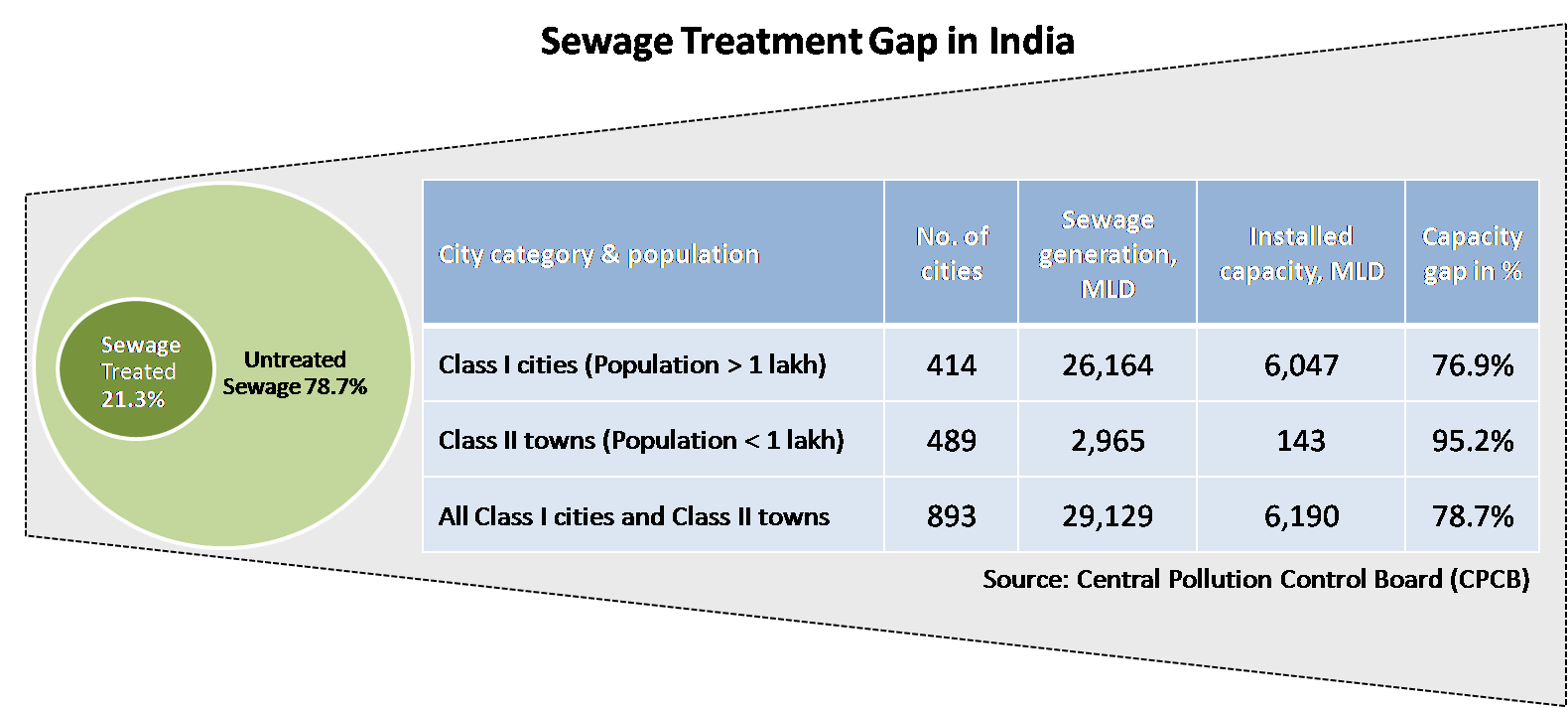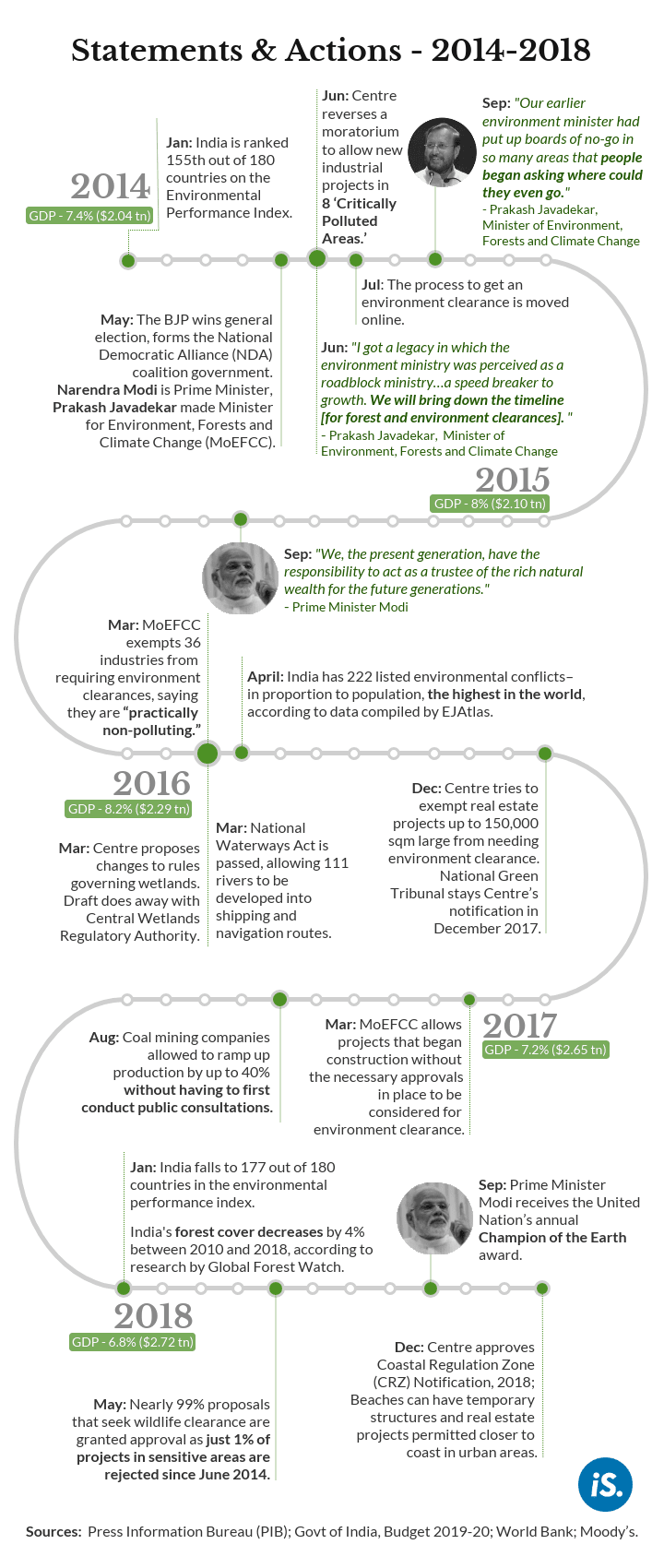The Supreme court of India has yet again taken a strong stance in questioning the MOEFCC for its constantly diluting “Green Standards” and recommended it to start acting “for environment” instead of just being a ministry of environment.
The bench listening to the appeal by Central Government against a 2019 order of NGT, being headed by D Y Chandrachud and including justices R Subhas Reddy and S Ravindra Bhat said:
“You must show it is a ministry for environment and not just ‘of environment’. You (ministry) have been constantly diluting the environmental standards. That’s all that has been happening.”
What was the 2019 order by NGT?
NGT (National Green tribunal) pointed out the Environment ministry’s 2017 notification regarding new rules for effluent discharge by sewage treatment plants (STPs) in waterbodies were faulty.
In its judgement, it held that the new rules would be enough to trigger further deterioration of water quality already prevailing the country at the time and prescribed stricter standards, derived from the recommendations of an expert committee.
Although the NGT impressed for switching to higher sewage treatment criteria to the existing STPs “without any delay”, the expert committee gave seven years moratorium for the same.
The NGT had clarified that the standards recommended for mega and metropolitan cities shall also apply to any place in the rest of India.
How did the Central Government react to the judgement?
The Government challenged the order in SCI and asked for an immediate stay on the judgement against new norms and got represented by additional solicitor general Aishwarya Bhati. In response, the SCI questioned the dire need for any stay in this case:
“What is the stay that you are seeking for? Should there be greater pollution? What is the harm in keeping the pollution low? Tribunal’s order has only ensured there is lesser pollution going into the water”.
While the government clarified its need for additional time to implement and upgrade as it is a time-taking exercise and it insisted that its 2017 notification was taken after greater insight and deliberations.
The representative even reasserted that NGT has not even fully accepted the recommendations of its own committee while directing that STPs to immediately upgrade and conform to the stricter standardized norms on effluent discharge.
In its final judgement, SCI has concluded while attaching another case against the same NGT order by municipal corporation of greater Mumbai: “No. We will not stay the order. You should also protect the environment”.
Recent trend to denigrate Nature?
The Government of India has recently passed certain controversial amendments disrespecting Environment and in the very times when Public is concerned about degrading environment, its off-shoots troubling mankind and its falling defenses against those.
Therefore, some have been criticized by environmentalists and Climate experts while a few have been challenged in court.
Constant and unbated chopping of trees for reckless construction questions the very sustainability crisis and inability of MOEFCC to question these attempts.
MoEFCC has not yet tended to the Court’s apprehensions as to why it still appoints an independent regulator to grant environmental clearances despite the court’s directives in this regard way back in 2011 and 2014.
Be it killing Aarey, Char-Dham road widening or revamping the Central Vista project in the heart of Delhi where pollution keeps sucking the life out of humans.
In its 2020 directions, the SCI ordered the width of the road to be well within 5.5 metres unlike the ministry of road transport and highways’ later notification, allowing the road width to be 10 metres. However, the review petition is still pending.
A lawyer associated with several Environmentalists pleading before the NGT and the Supreme Court has clarified:
“The issue of dilution of environmental norms is very serious, especially when the EIA draft notification of 2020 proposes to pave way for further relaxations. Development and environment have to go hand-in-hand as enshrined under the principle of sustainable development.”
In may 2021 alone, India’s Environment ministry (MOEFCC) allowed companies from all genres, including some of the core polluting ones, to expand their capacities on the basis of a self-certification professed by them that their activities will not “increase the pollution load”.
However, in June 2021, this was thrashed by NGT under a principal bench headed by chairperson Justice Adarsh Kumar Goel that clearly said No Industry can operate without prior environmental clearance.
This was done against the very spirit of April 2020 Supreme Court ruling that the concept of ‘ex post facto’ environmental clearance (EC) is against the basic requisites for complete environmental jurisprudence.
It came against the infamous Environment Impact Assessment (EIA) draft notification 2020 for replacing the EIA notification 2006 and said that facilitation of operations without EC would prove detrimental to the environment and lead to irreparable degradation.
“But when it comes to primacy, we must choose the environment, for the present and for the intergenerational ecological justice. Future generations possess a legal right to a clean and healthy environment.”
Although present environmental laws lack teeth against the wrongdoings to Nature: beginning from the inadequate definition of laws, strict punishments or the innate lack of integration with sustainable development.
We don’t need more new laws to make things right, we need to comprehensively describe and implement the current ones for ours and Nature’s benefit.



